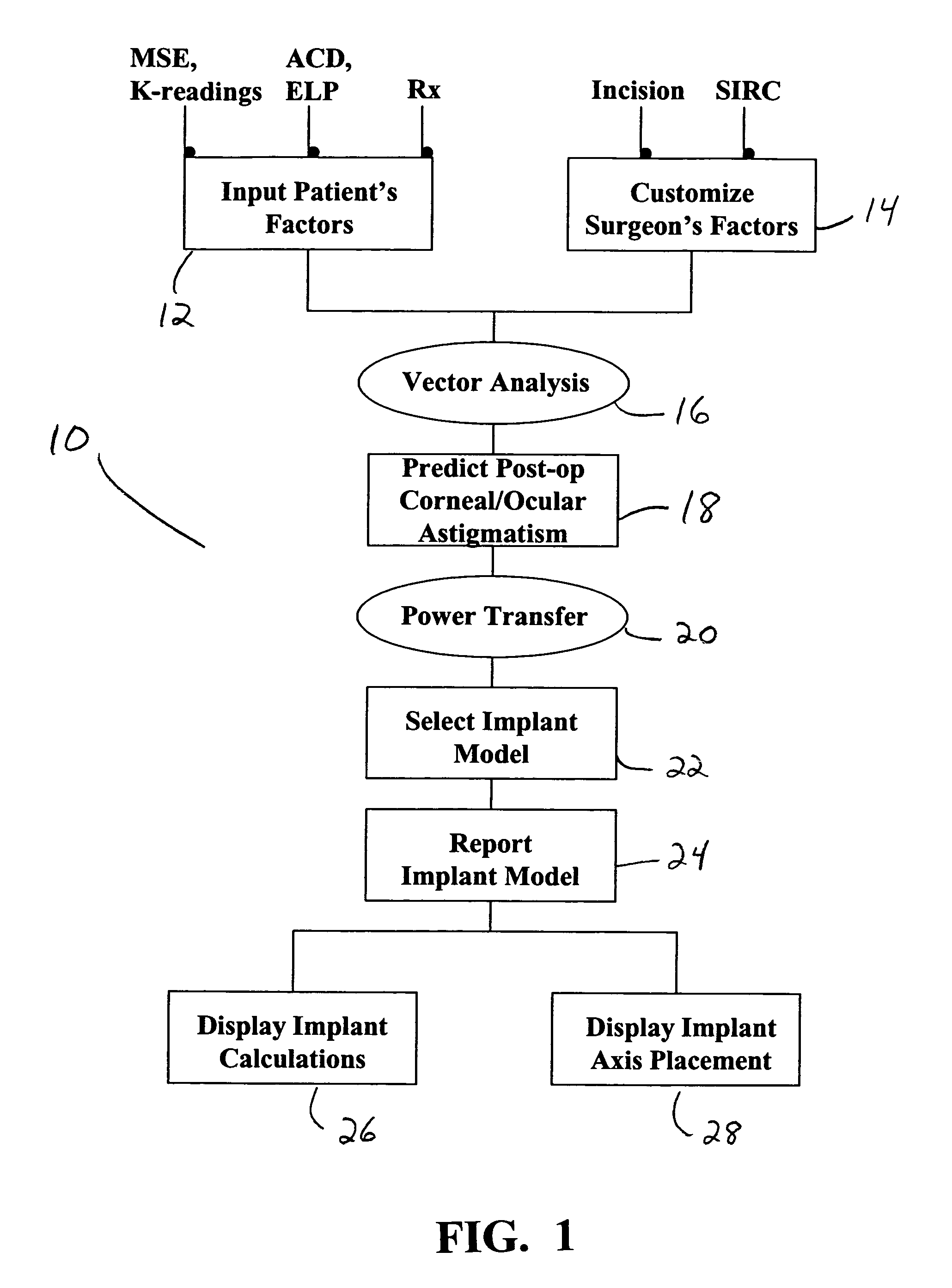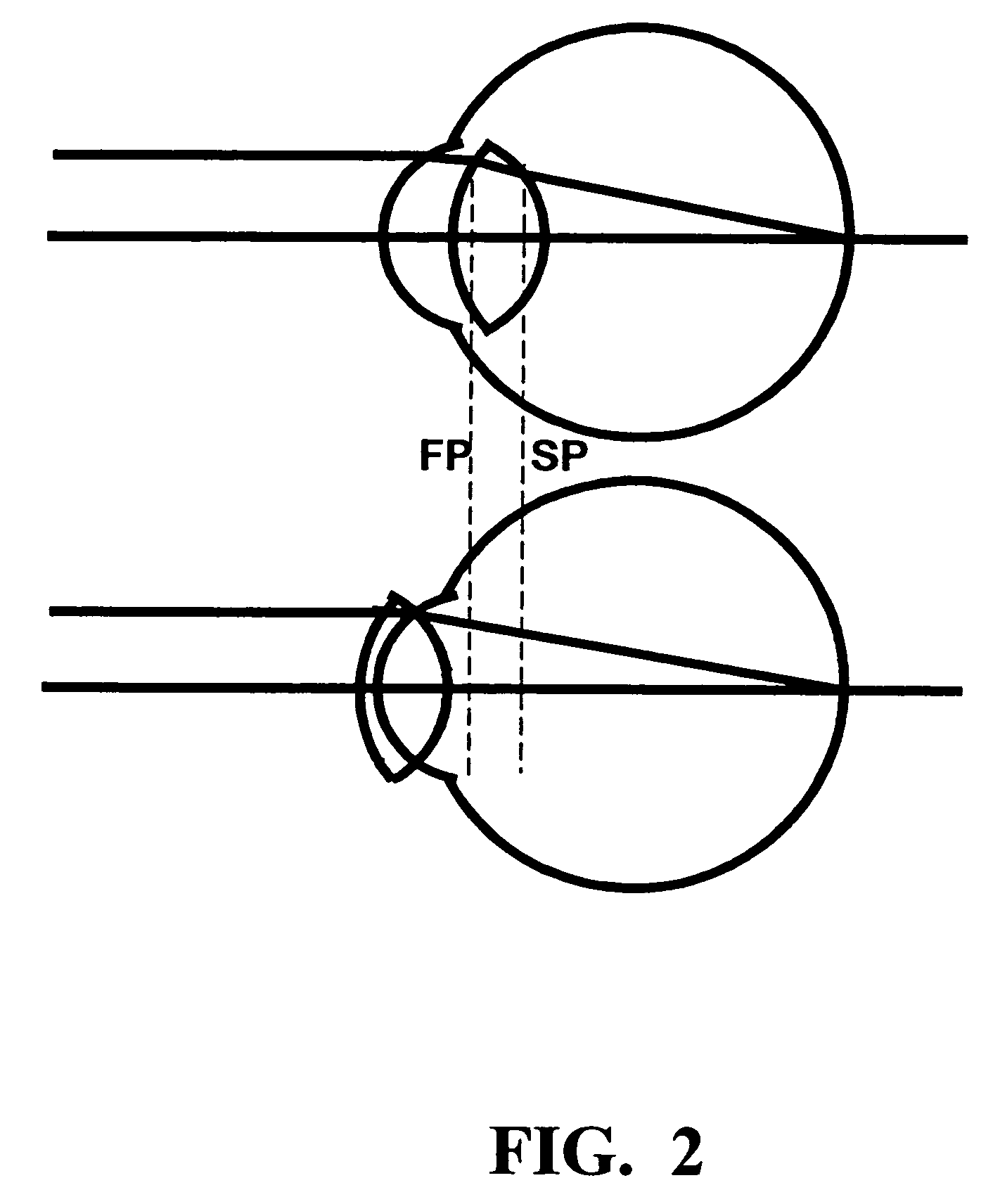Method of calculating the required lens power for an opthalmic implant
a technology of opthalmic implants and lens power, applied in the field of ophthalmic lenses, can solve the problems of uncompensated cylindrical refractive error, corneal astigmatism, and procedure itself can induce corneal astigmatism, and achieve the effect of reducing the risk of corneal astigmatism
- Summary
- Abstract
- Description
- Claims
- Application Information
AI Technical Summary
Benefits of technology
Problems solved by technology
Method used
Image
Examples
Embodiment Construction
[0014]Method 10 of the present invention generally includes determining the magnitude of the astigmatic error of a patient based on patient factors and surgeon factors. Patient factors (12) include (i) the mean sphere equivalent (MSE) of the implant, (ii) the K-reading for the steepest meridian (K1) and axis (A1) and the K-reading for the flattest meridian (K2) and axis (A2), (iii) anterior chamber depth (ACD) or effective lens position (ELP) and (iv) the manifest refraction of the whole eye (in the case of calculating ocular astigmatism). Surgeon factors (14) include incision size and location (incision) and the surgically induced refractive change (SIRC) typical for the individual surgeon. Both patient factors 12 and surgeon factors 14 are analyzed at step 16 using a power vector analysis. Step 16 may use any of a variety of mathematical formulas well-known in the art, one suitable formula will now be discussed. The sphero-cylindrical prescription (S, C and α), either in optometri...
PUM
 Login to View More
Login to View More Abstract
Description
Claims
Application Information
 Login to View More
Login to View More - R&D
- Intellectual Property
- Life Sciences
- Materials
- Tech Scout
- Unparalleled Data Quality
- Higher Quality Content
- 60% Fewer Hallucinations
Browse by: Latest US Patents, China's latest patents, Technical Efficacy Thesaurus, Application Domain, Technology Topic, Popular Technical Reports.
© 2025 PatSnap. All rights reserved.Legal|Privacy policy|Modern Slavery Act Transparency Statement|Sitemap|About US| Contact US: help@patsnap.com



